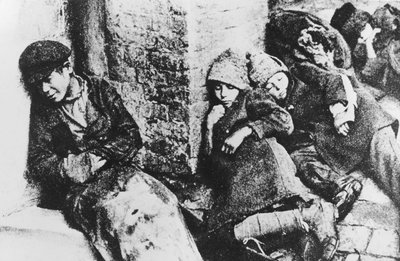The Great Famine of Ukraine
Why Ukraine? Why such Man-made Famine? What is the Soviet reason behind?
Vladimir Putin shattered the peace in Europe by unleashing war on a democracy of 44 million people, his justification was that modern, Western-leaning Ukraine was a constant threat and Russia could not feel "safe, develop and exist". But after thousands of deaths in ruined towns and cities and the displacement of more than 10 million people inside Ukraine and beyond. One in common, They are on the same floor of control, and couldn't choose independently being a democratic from the 1920's.
Hope it helps..!
A Glance in tranquility wins
Joseph Stalin and Breadbasket
Joseph Vissarionovich Stalin was a Georgian revolutionary and Soviet political leader who governed the Soviet Union from 1922 until his death in 1953. Stalin wanted the country, with its hugely fertile black soil, to be the breadbasket of the Soviet Union. He wanted to feed the important party officials and to export its grain abroad to fund his vast industrialization projects. It was an unmitigated disaster. Farmers were no longer paid for their produce but worked according to a ration system based on their productivity. In reality it made them beholden to the party, which, controlling their finances, was able to control all aspects of their lives. And they were no longer able to buy food.The Man-Made Famine
In the 1930s, Soviet leaders under Joseph Stalin engineered a famine that killed millions as they sought to consolidate agricultural power. In Ukraine, they used additional force as they sought to clamp down on a burgeoning Ukrainian national identity. So many Ukrainians died that officials had to send people to resettle the area, setting off a demographic shift. As hunger spread among residents, Stalin spearheaded a disinformation campaign to hide the truth from other Soviet citizens and the world. At least 5 million people died from starvation in the Soviet Union between 1931 and 1934 including 3.9 million UkrainiansHolodomor
Between 1917 and 1921, Ukraine briefly became an independent country and fought to retain its independence before succumbing to the Red Army and being incorporated into the Soviet Union. In the 1920s, Soviet central authorities, seeking the support of the populace, allowed for some cultural autonomy through the policy known as “indigenization.” By the end of the 1920s, Soviet leader Joseph Stalin decided to curtail Ukraine’s cultural autonomy, launching the intimidation, arrest, imprisonment and execution of thousands of Ukrainian intellectuals, church leaders, as well as Communist Party functionaries who had supported Ukraine’s distinctiveness. The majority of Ukrainians, who were small-scale or subsistence farmers, resisted. The state confiscated the property of the independent farmers and forced them to work on government collective farms. This created a Man-made famine in the region, referred to as the great famine “Holodomor”.The Russian Denial
The USSR vigorously denied that the Holodomor had occurred. Since the collapse of the Soviet Union, the Communist Party, secret police, and government archives that have become accessible to researchers support the conclusion that the famine was caused by Soviet state policies and was indeed intentionally intensified by Soviet authorities.
Raphael Lemkin and Soviet Genocide
Raphael Lemkin, an expert in international criminal law with a particular interest in the prevention of mass human extermination, who coined and promoted the term "genocide," identified the Holodomor as "the classic example of Soviet genocide."
.jpeg)





